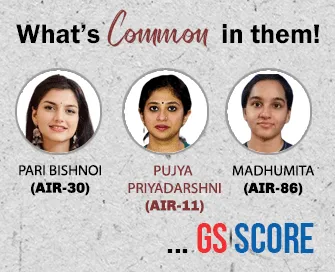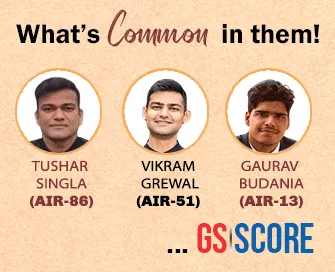

24th August 2023 (9 Topics)
Editorials
Context:
India needs to aspire to provide social security to its entire workforce, in a manner that is fiscally and administratively feasible.
India’s present social security stance
- Lack of Social Security: Around 53% of India's salaried workers there is lack social security benefits, including provident funds and health insurance.
- Low Utilization: Policy announcements on social security have limited budget allocation and poor utilization, leaving schemes ineffective.
- Systemic Issues: CAG audits reveal underutilized funds, stagnant pensions, and mismanagement in social security schemes, highlighting significant policy and implementation challenges.
Schemes overseas
- Brazil's Comprehensive System: Brazil's contribution-based system provides broad coverage for income loss due to accidents, disabilities, illnesses, family responsibilities, and even imprisonment.
- Focusing Inclusive Approach: The system covers health care and unemployment, backed by National Treasury if funds are lacking, with easy benefit access in countries abroad like Canada.
- India's Informal Sector Challenge: With 91% in the informal sector, India's workforce lacks social security. The 2020 Social Security Code doesn't sufficiently address informal workers' needs.


Editorials
Context:
It is no secret that the U.K. and India share a thriving trading relationship, however, their strong partnership extends far beyond trade and investment i.e. into culture, sport, education and tourism too.
India-UK Relations
- Diverse Partnership: Beyond trade, the U.K. and India share bonds in culture, sports, education, and tourism, forming a "living bridge."
- Cultural Exchange: Bollywood's popularity in the U.K., evident in films, showcases the strong connection.
- Indian Diaspora: Over 1.6 million-strong Indian diaspora in the U.K. significantly contributes to education, workforce, and international student community.
Area of Cooperation
- G-20 Host India: India's role as G-20 host highlights its growing global influence, promoting international cooperation on trade and digitization.
- K.-India Trade Relations: The U.K. emphasizes fair trade and is building trade partnerships, recognizing India's expanding middle class and investment potential.
- Bilateral Trade Impact:K. and India's thriving trade ties involve investments, job creation, and economic growth in both nations.


Editorials
Context:
Recently, the Parliament has passed Bharatiya Nyaya Sanhita, 2023, under which a clause on using “deceitful means” to promise to marry a woman was penalized, after many cases emerged where women ask for their bodily rights (in case of pregnancy).
Supreme Court’s Intervention
- SC Emphasizes Reproductive Rights: India's Supreme Court underscores a woman's right to make reproductive choices, criticizes undue interference.
- Timely SC Intervention: A woman's plea to terminate her pregnancy denied by Gujarat HC; SC's swift review enabled her decision.
- Promise of False marriage: Alleged "false promise to marry" relates to IPC Sections 375 and 90, involving invalid consent due to fear or misconception.
Issues
- Relative Progressiveness of Laws: India's abortion laws are more liberal than some U.S. states, but practical barriers persist.
- Complex Obstacles: Medical, judicial, and societal barriers hinder legal and safe abortions in India, akin to some U.S. states.
- Trauma of Violation: The Gujarat case highlights the additional trauma faced by victims when societal expectations collide with personal choices post-violation.


Editorials
Context:
The Reserve Bank of India’s Public Tech Platform for Frictionless Credit will help loan approvals for small borrowers.
About the initiative
- RBI's Credit Platform Initiative: RBI's 'Public Tech Platform for Frictionless Credit' aims to streamline credit access for small borrowers.
- Efficient Loan Processing: The platform offers a digital clearing house, expediting loan approval and disbursement through integrated data.
- Inclusive Design: Developed by RBI Innovation Hub, the platform fosters data exchange among diverse entities for seamless credit assessment.
Benefits
- Validation through Pilot Project: RBI's platform to undergo pilot testing on diverse loans, including Kisan Credit Card, dairy farming, and MSME loans.
- Data Inclusion: Platform integrates data from Aadhaar e-KYC, digitized land records, and data like milk pouring data from cooperatives.
- Enhancing Utility: Utility demonstrated through various loan types, aiming to enhance access and efficiency in lending processes.




